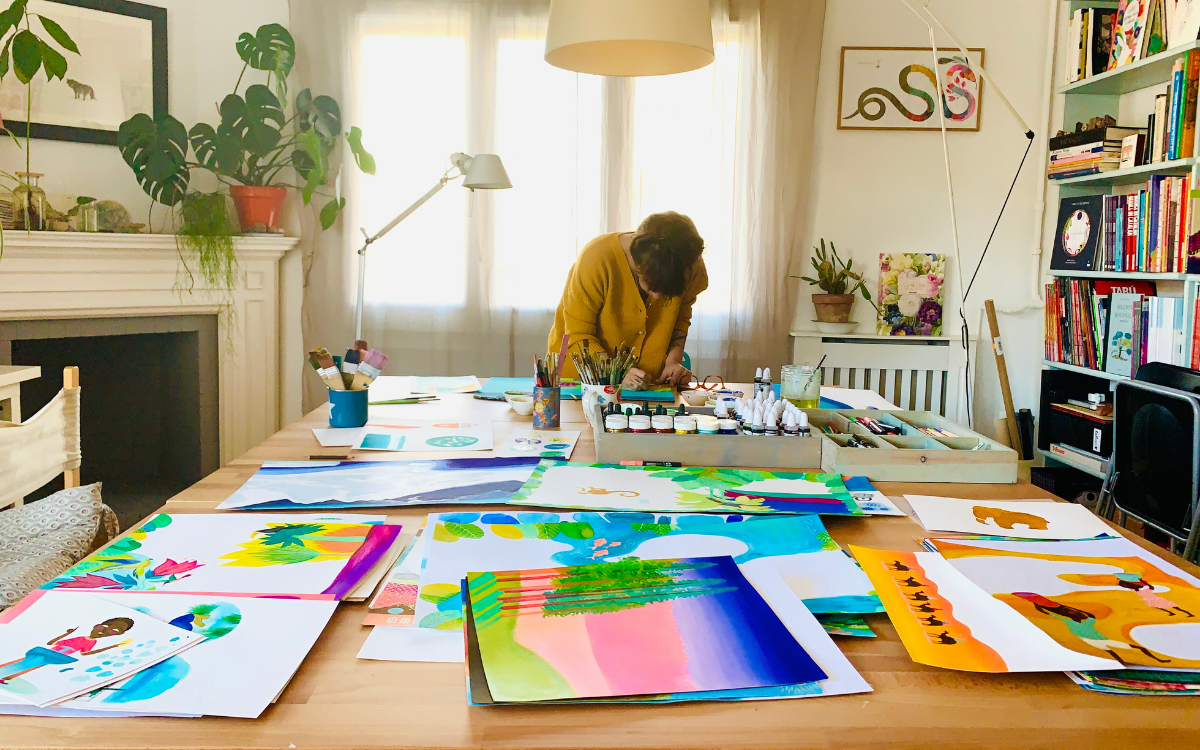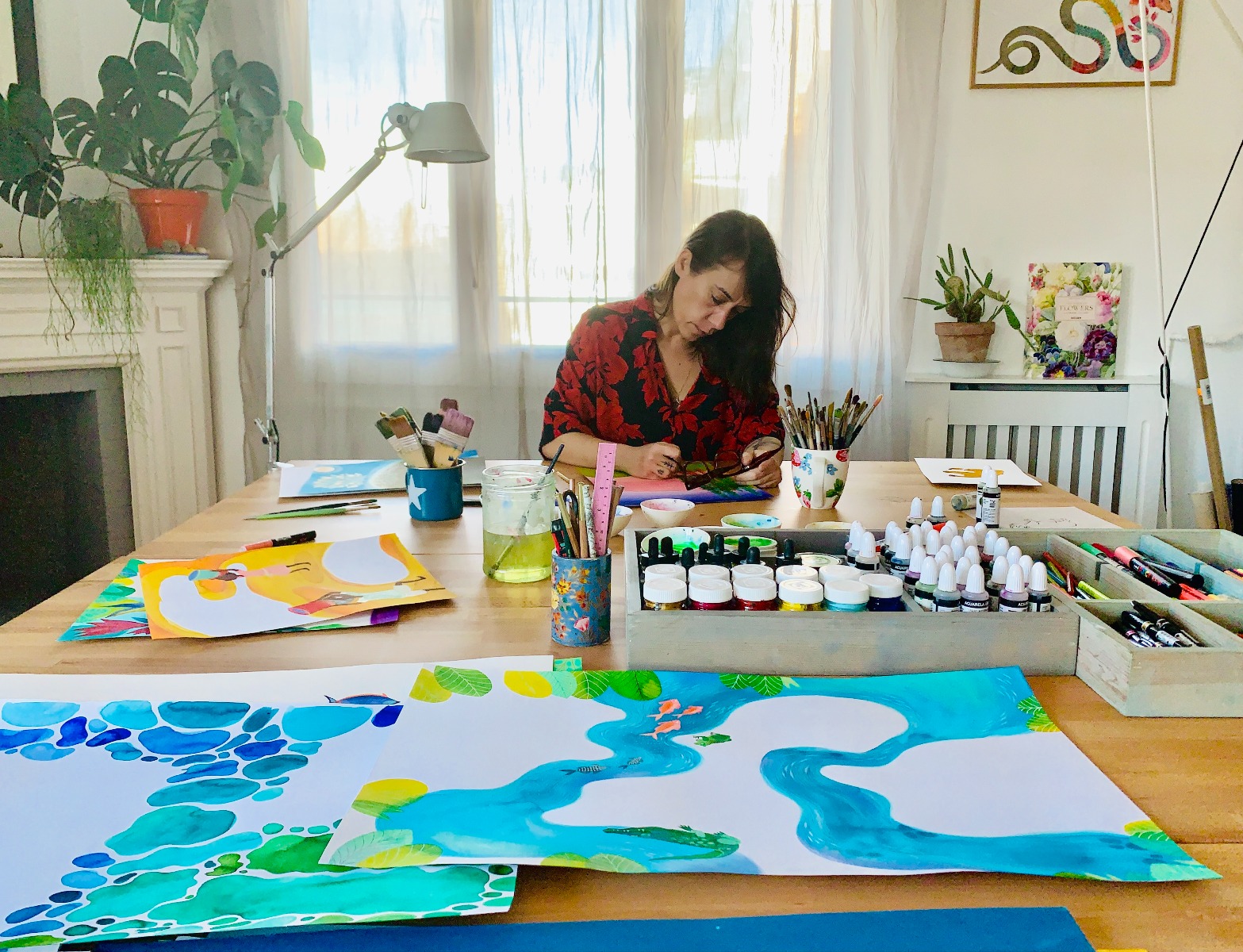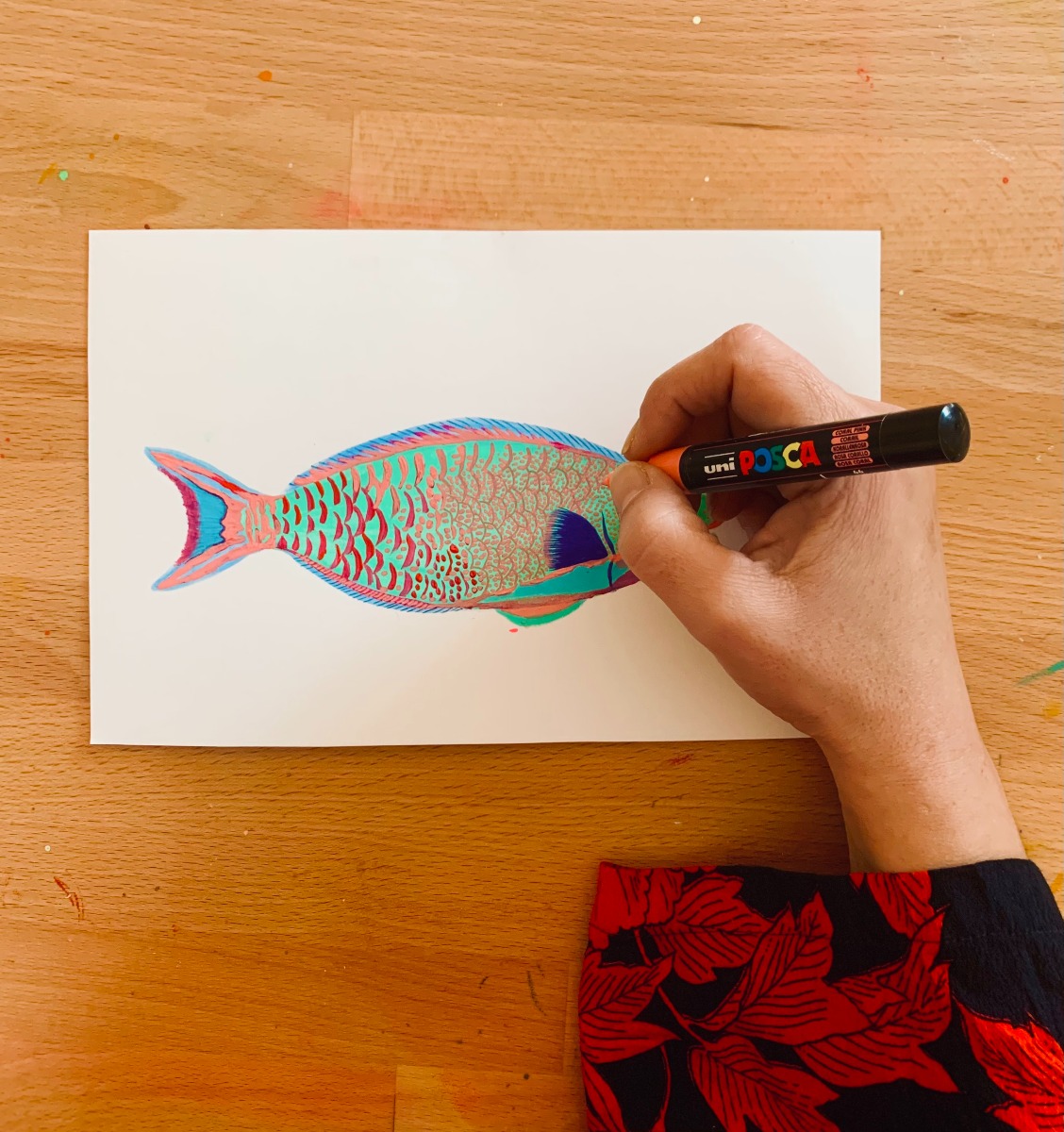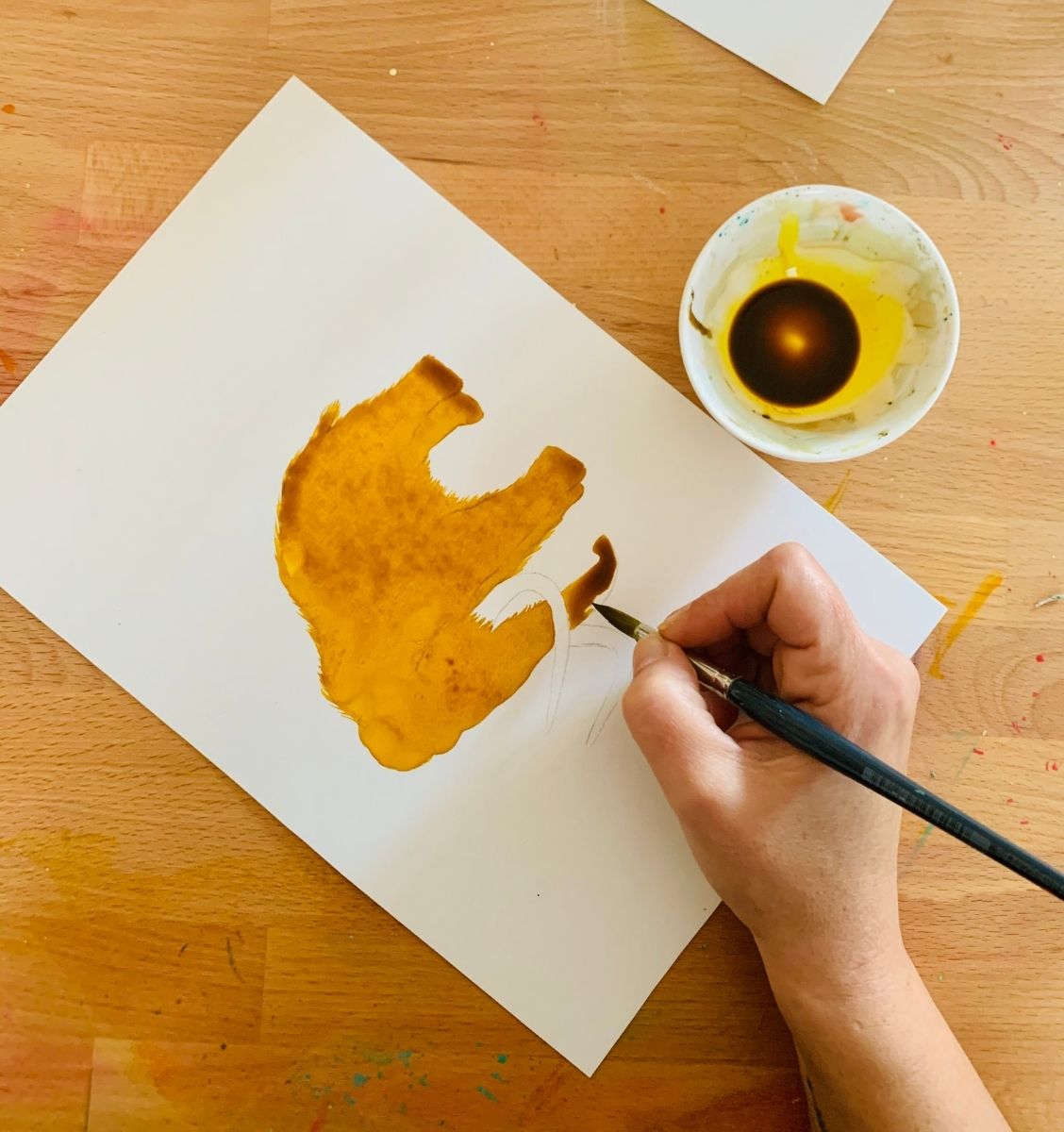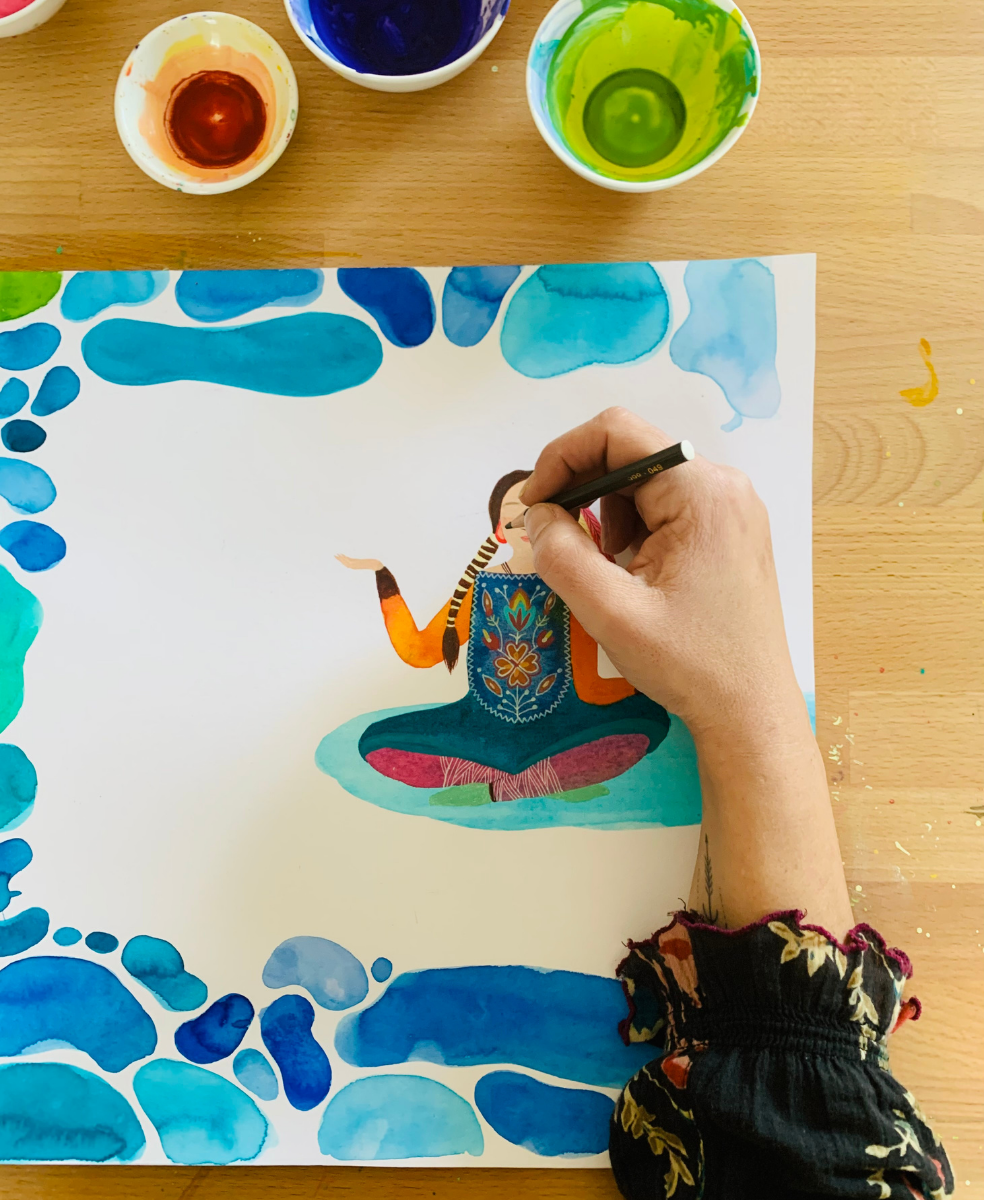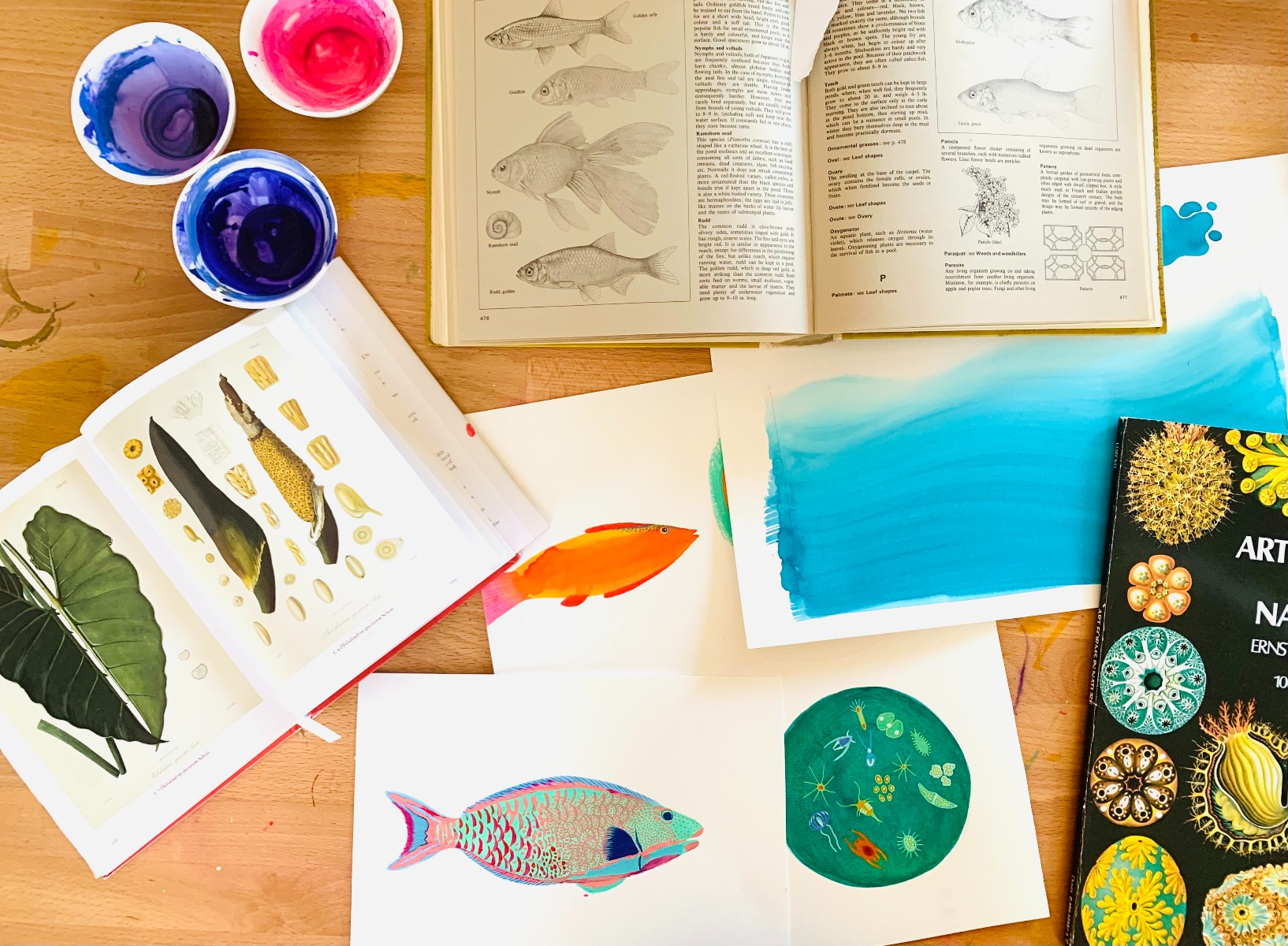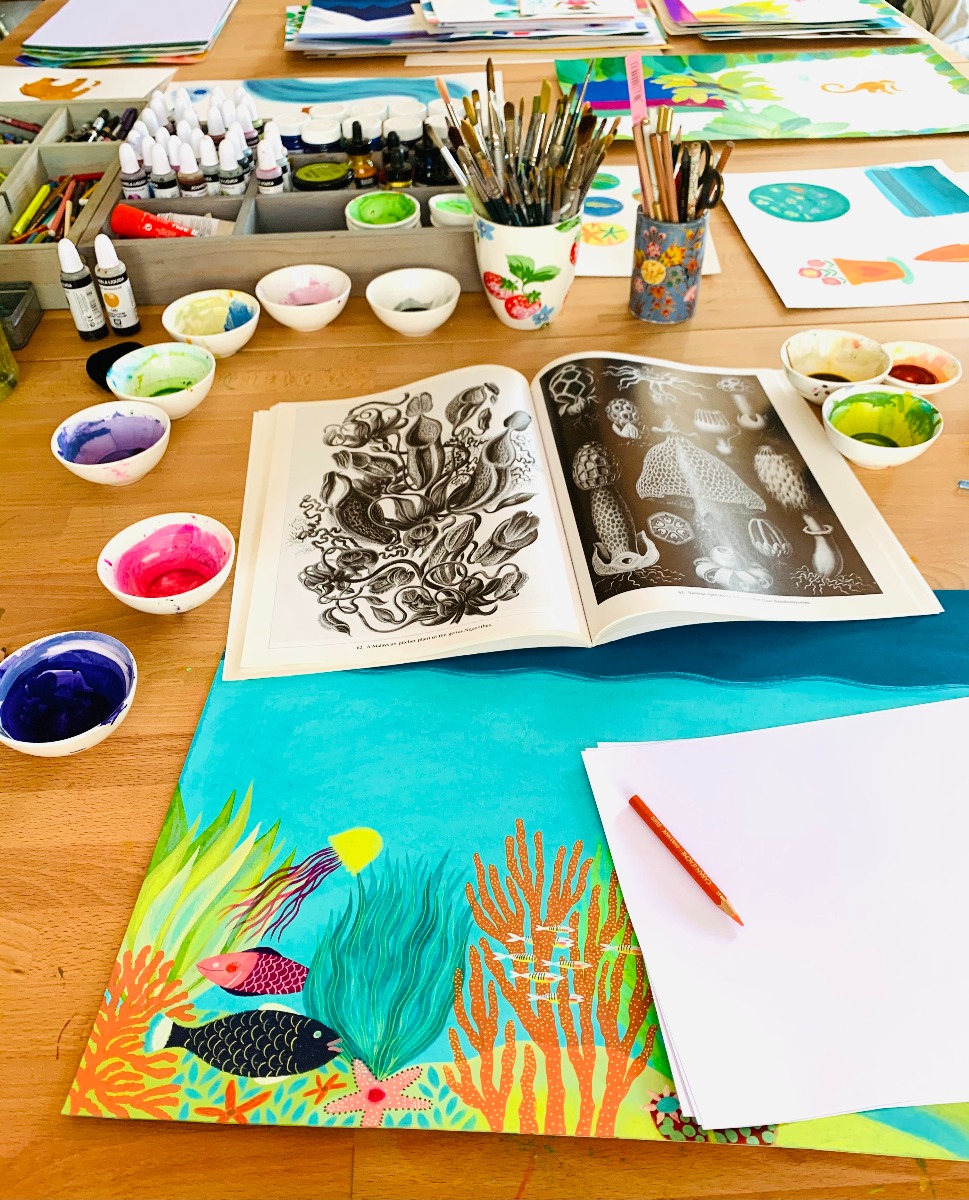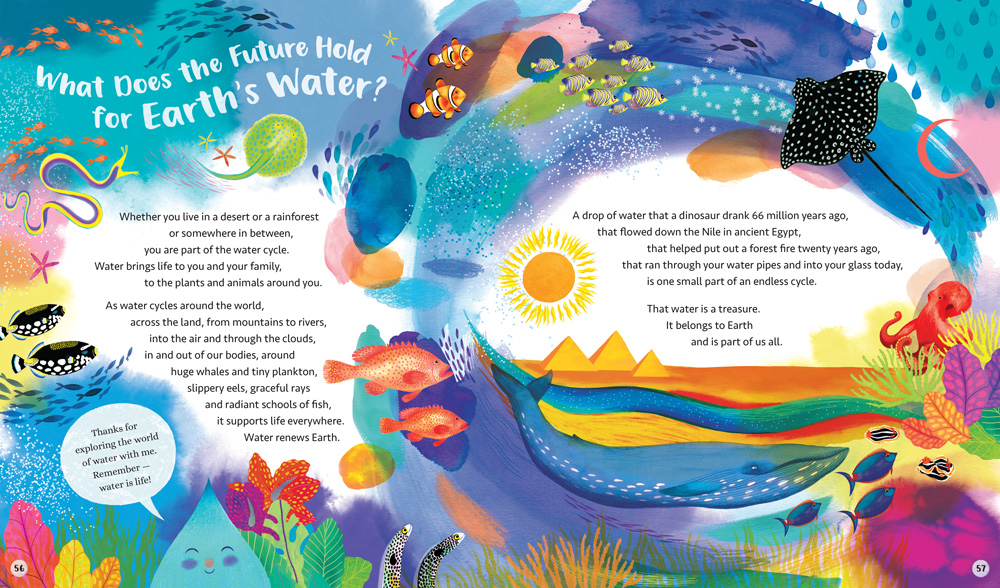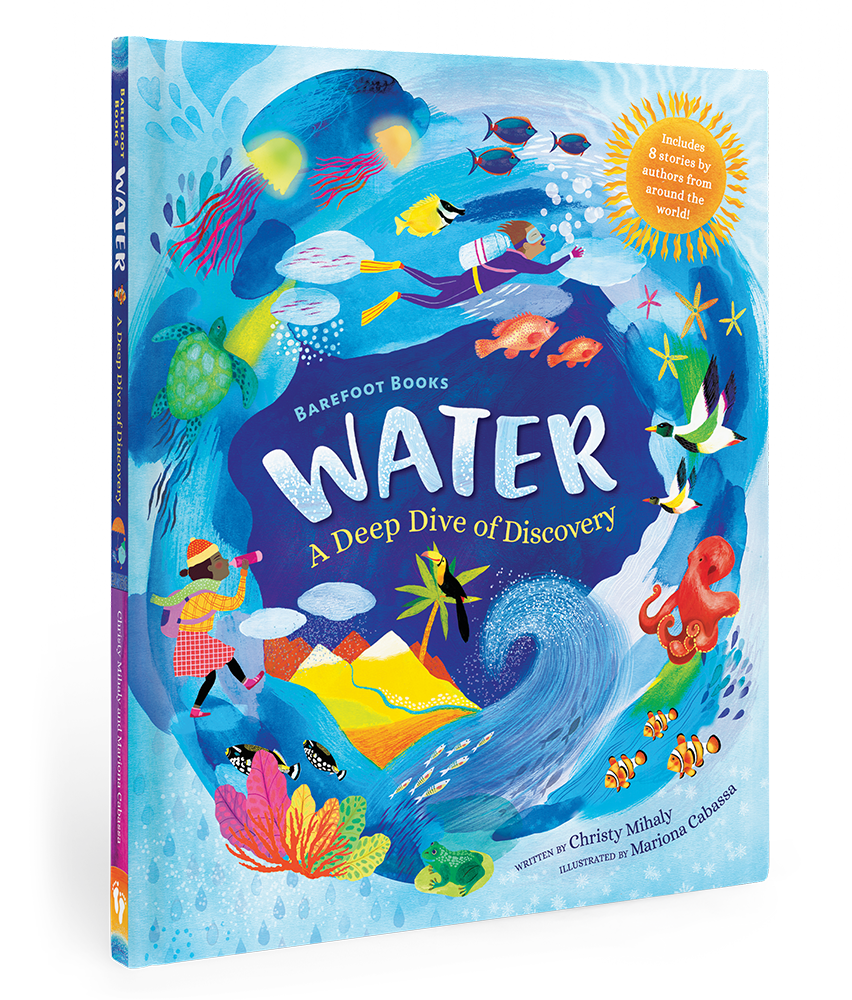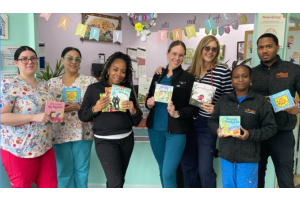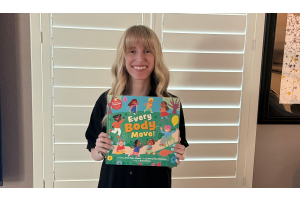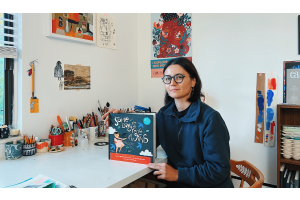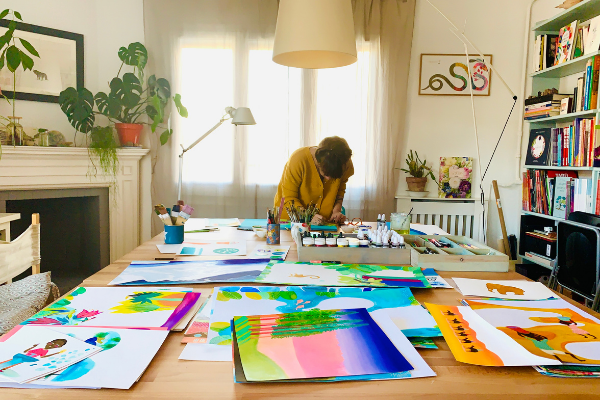
Barefoot Books Water is not your everyday children’s picture book. Blending fiction and nonfiction, this massive book bursts with facts and color to help young readers understand our planet’s most precious resources — and how they can protect it! Hear from multi-medium artist Mariona Cabassa on her journey illustrating Water, which involved a lot of watercolors mixed with wax pencils, crayons, ink, markers and gouache painting.
What was your inspiration in illustrating Barefoot Books Water?
On the one hand, I had a lot of documentation that the editors and the author provided, which was an enormous help. Visually speaking, I had a lot to nourish my eyes and from there started imagining what I could create from it.
On the other hand, especially on the less “technical” or scientific pages, I allowed myself to imagine the diversity of landscapes where the importance of water is present in the world — which is everywhere! So in imagining that diversity, I had plenty of space to play with the different scenes, in different locations whether real or imaginary.
I have always had a special interest in drawing plants, flowers, animals and nature in general — the natural world is a great inspiration to me so Barefoot Books Water has been perfect in that sense!
Images by Mariona Cabassa
What is your creative process like?
First of all, I look at the documentation as well as images I have that inspired me, and I sort of create mental images of what I want to draw. I need to “see” them first in my head, “dream” them and “live” with them for a while before they come out.
Then I usually start with simple pencil sketches that are just for me to see where each element of the drawing will be placed on the page. I don’t worry about the details, just the main areas of the drawing and what kind of space they take on the page. Then I establish the range of the importance of each part.
Once that’s done, I start working in a more detailed way (sometimes digitally, sometimes manually) to get a more finished sketch that I can show to the editors and authors. I don’t do color tests at this stage since color is something that comes up in a more spontaneous way once I am working on the final art. Colors, textures, details and some shapes cannot be sketched and they only come up once I am fully diving into the final artwork.
I really enjoy not having everything planned and trusting that there will be nice surprises on the go.
How do you overcome a creative block?
Oh! First of all, accepting it! My experience says that it gets worse if I fight it. Then, knowing that there is a part of my “inspiration” and creativity that is not in my hands.
As for the part that is in my hands, I’ll quote Pablo Picasso: “Inspiration exists, but it has to find you working.” So yes, work, work and work but always combined with moments of disconnecting, going to nature, to swim, to do things that have nothing to do with work . . . to get some space away from the process of creation. I think in creating the balance between these two spaces, things slowly start to flow again.
What was it like working with the author on Water? Or the editors?
It was really a pleasure to work with them! All the editors, the graphic designer and the author made things very easy for me, helping in every step of the process. They provided the documentation and information that I needed, especially for the more scientific and technical pages, and gave me plenty of space and freedom to create and interpret the more “fantasy” pages.
I think this was a very complex book because it has lots of different aspects that need to be accurate, different landscapes and locations, technical elements, diversity and also this aspect of fantasy. I think the whole team did a wonderful job!
What was your favorite part about illustrating this book?
I really enjoyed every part of the book as it offered me such a diversity of landscapes and different things to draw! But in my work in general, I always have a preference for drawing things from nature: plants, flowers, animals, landscapes, etc.
I also very much liked drawing the fictional stories where I had full freedom to interpret them. I enjoyed looking for images to get inspiration about the different cultures and backgrounds that the stories came from.
What were some challenges or surprises that you faced?
On the drawing aspect, maybe the more technically complex images such as maps, graphics and machines because it’s not what I usually do. Some of the scientific elements needed to be really accurate — but, like I said, I had wonderful guidance from the author, the experts and the editors team.
And surprises abounded as I discovered and had to work with images of different contexts in which water has an important presence — or where there’s a lack of water — and that was unknown to me.
I always say that illustrating a book is sometimes like traveling because you get to see and know places where you have never been to.
What do you hope children will take away from Water?
Knowledge about how important water is. How we all need to treasure and take care of this precious resource because in doing so, we are not only taking care of us but also of everything on Earth. Nature and animals . . . one cannot live without the other, and we must know that keeping everything in balance is important.
Also, how lucky we are in certain areas of the world where water is a given. This book also makes us aware that it is not like that everywhere and I hope that it will make younger generations more aware of how important it is for the future to be responsible with the natural resources we have.
What was one thing that you learned while illustrating this book?
I’d say that I wasn’t aware of the 50% (or more) of the facts about water that are explained in this book. So I learned a lot about this very important resource and how we can all take better care of it (as I hope all the readers, children and adults, will learn as well).
As I said, I hope this book helps everybody to be more conscious about how important it is for our future to take care of our planet and find a more balanced way of using the beautiful natural resources that we have, and the natural amazing diversity they create: animals, plants, ecosystems, etc.
I hope we are all wise enough to start taking better care of it and treasure it as it deserves.
About Mariona Cabassa
Mariona Cabassa is a native of Catalonia, Spain, who has illustrated over 80 children’s books. She studied at art school in Barcelona, followed by further research in Strasbourg, France. Her many subsequent years of working as an illustrator, painter, installation maker and tattoo artist reflect her fascination with form and her desire to explore different palettes. Mariona’s technique combines water-based paints, pencils and a digital touch to create rich and detailed illustrations, bursting with color and movement. She has also illustrated the award-winning picture book, A Gift for Amma.
About Barefoot Books Water
Listed on Kirkus Reviews’ 150 Most Anticipated Fall Books, 2021
Listed on the UN Sustainable Development Goals’ “Life Below Water” Reading List, 2021
★ “This intriguing, oversized title combines science and story to explore water in all its forms . . . [Mihaly] addresses readers directly, with respect for their capacity. Thoughtful, engaging design and lively illustrations add further appeal. Oceanic in scope — but clear and refreshing”
– Kirkus Reviews, starred review
Written by Christy Mihaly
Illustrated by Mariona Cabassa
Immerse yourself in fascinating facts about water! This comprehensive yet accessible exploration of water will help young readers understand many aspects of one of our planet’s most precious resources – and how they can protect it. A friendly water droplet character guides children through topics ranging from melting and freezing to the ways in which water literally shapes the Earth. Tales by storytellers from around the world are sprinkled through the book, highlighting the variety of ways in which global cultures value water. The engaging format includes gatefolds and booklets with hands-on activity ideas for learning about and protecting water.



